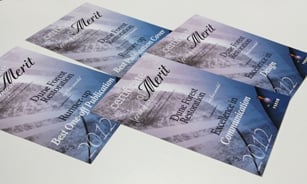Posted on December 07, 2012
Prof van Aarde and Dr Guldemond lead a long term monitoring and research programme at RBM, managed by Rio Tinto, in South Africa.

RBM mines sand dune where some remnants of sub-tropical coastal dune forests occur. High standards of rehabilitation have always been a top priority for the company and restoration began in 1977, when mining began on mostly bare, degraded coastal dunes. A clear objective was to restore dune forests on a third of the mined dunes. Prof van Aarde and his team have been conducting research and monitoring since 1991, which is still on-going. They focus on time- and age-related changes in a number of ecological variables that centre on trees, millipedes, rodents and birds. The results to date have been outstanding.
The regeneration of a dune forest relies on natural processes that drive succession. These processes are kick-started by stabilising topsoil on reshaped sand dunes through seeding of fast growing annual plants to provide ground; soon after the typical pioneer species of the region, Acacia karroo or Sweet Thorn establishes and, finally, this is followed by the appearance of species typical of dune forest. Over time native fauna also re-established and recolonised these regenerating new growth forests. They wrote: 'The extraordinary diversity of species living in the new growth forest in RBM's mining lease areas is a testament to the company's long-term ecological restoration program. In these areas, trees form a dense canopy and provide shade and shelter for lush growths of shrubs, herbs, ferns and some grasses. Brightly coloured flowers, snails, insects, millipedes, frogs, chameleons, snakes, tortoises and birds live here. Mammals other than shrews and rodents are rare, but red duikers, bush babies and the occasional leopard do occur. Jointly these plants and animals form a dune forest similar to other indigenous forests along the coast.' The Richards Bay experience is an object lesson - particularly the benefits that flow from rehabilitation and the value of long term monitoring and research. As Prof van Aarde’s and Dr Guldemond’s work demonstrate, understanding the re-establishing of a complex ecosystem is a journey. It takes time, commitment and experience.
* The SA Publication Forum is committed to improving and promoting corporate publications in South Africa. The main activities of the forum are the annual Corporate Publication Competition and training opportunities in the form of training courses, workshops and seminars. Close on 150 publications, electronic newsletters and DVDs were entered this year. Publications were judged in terms of writing, communication, design and photography in different categories.
Copyright © University of Pretoria 2025. All rights reserved.
Get Social With Us
Download the UP Mobile App